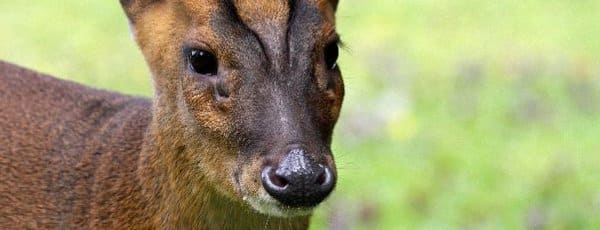Deer in Zoos
Most species of deer do extremely well in captivity as long as they have a large habitat and they have enough food. It is best for these animals to be placed into the environment though from the time they are very young. Older deer are very set in their ways so such a change can be very stressful for them. Some even refuse to eat because of those changes.
Zoos are common places for deer to live in captivity. They give people of all ages the opportunity to view them up close. They may be very shy and timid though due to the fact that they instinctively move away from people and noises. Deer are also the most active at night and the zoo is open during the day when they are usually in a state of rest.
Through captivity programs some species of deer with lower populations have has the opportunity to increase their numbers. We can also learn a great deal about their normal behaviors and communications when they are in captivity. However, there are plenty of people out there that object to this. They feel all deer species should be able to freely roam in open areas.
Deer farms have become a very common entity as well. This offers a large piece of land where the basic needs of the deer are continually met. The area is well managed to keep the population where it is able to provide for all there but not more than that. The young may be kept with their mothers in smaller fenced areas for the first few weeks of life. This gives them additional protection.
The deer at these farms are often used to humans being around so they don’t run off when they approach. The deer are often evaluated and if there is an outbreak of parasites or other problems they can be given medical attention to remedy the situation as quickly as possible.
The purpose of a deer farm is to be able to make money. In most instances the does and the bucks are sold to other entities. Those are locations where people pay for the right to hunt during certain times of the year. The bigger bucks that can be offered the more money they can charge for those types of hunts.
Through the various practices of deer farms the genetic quality continues to be very strong. Those bucks that don’t have good genetics aren’t allowed to breed. It is a complex process to operate a deer farm but one that many people do quite successfully. It is also a very profitable business as long as you are offering quality deer and have plenty of buyers.
Other deer farms are there for the sole purpose of helping these animals to survive. They are used for educational purposes and it is often that families and school groups come to these farms for a tour. The goal is to help educate the public about deer and the needs that they have in order to survive.
Some people have deer as pets too. They may have saved a young fawn after the mother was killed by a predator or struck by a car. They may have nursed a sick deer back to health. These deer are free to roam but they do interact with humans and come back to central locations often for food and socialization.
The issue of deer being placed in captivity or at deer farms continues to be a huge issue. It is one that there aren’t any easy answers to. On one side you have those that view it as a way to help these species to thrive. On the other hand you have those that strongly object to humans intervening with the natural balance of things.






